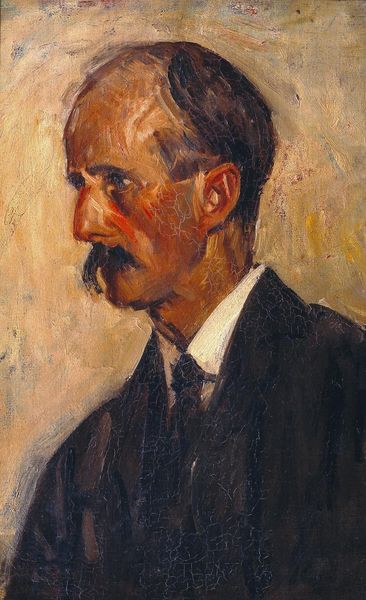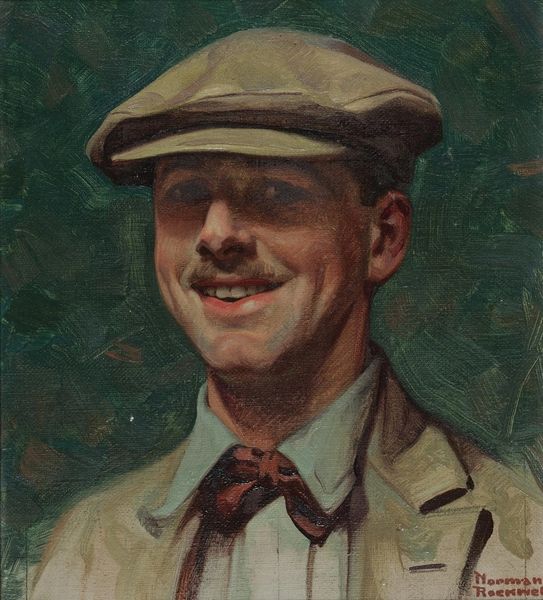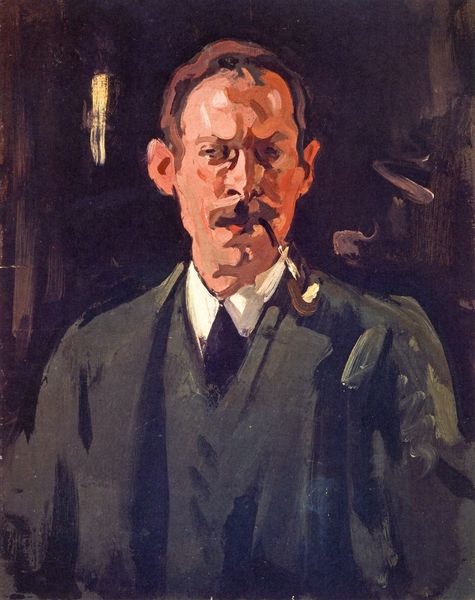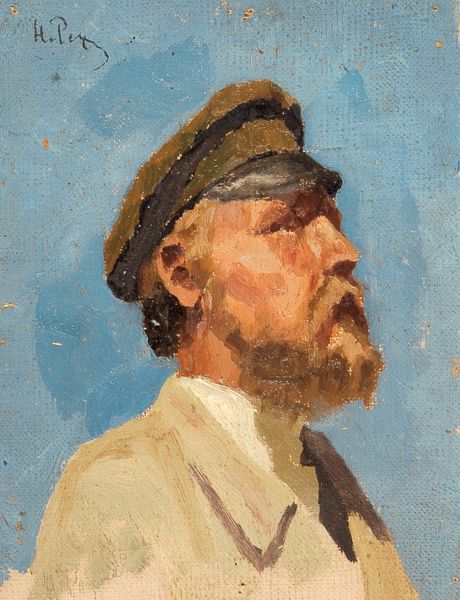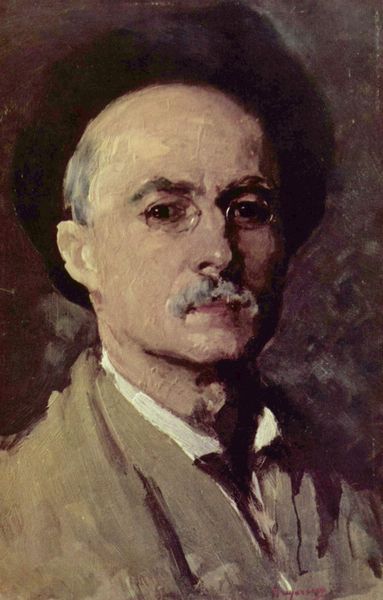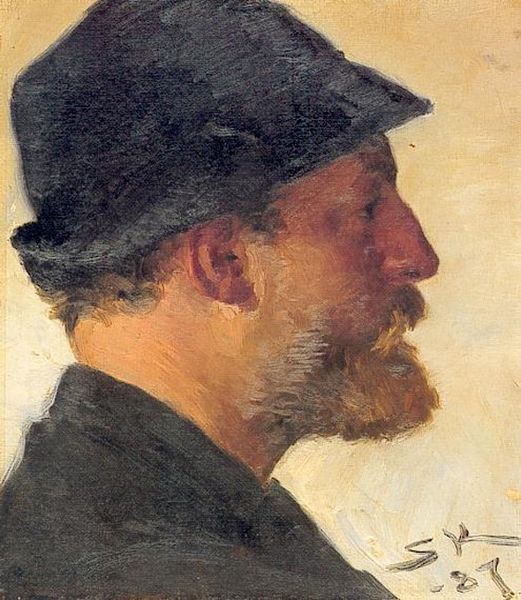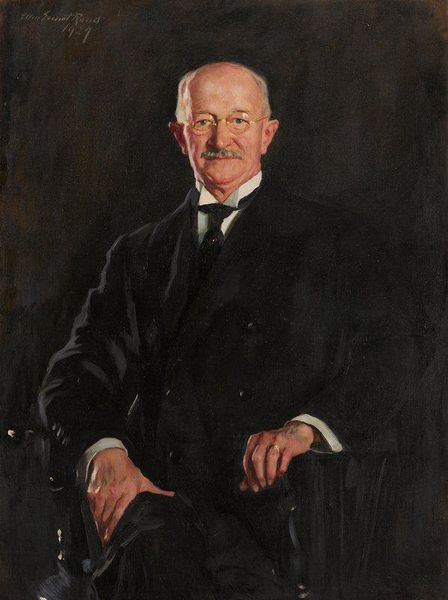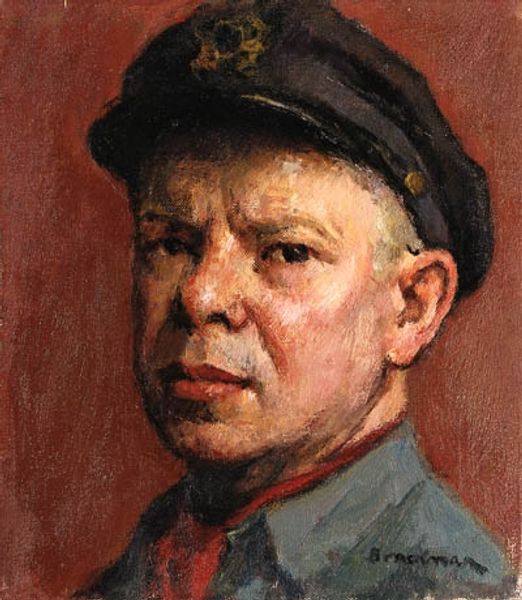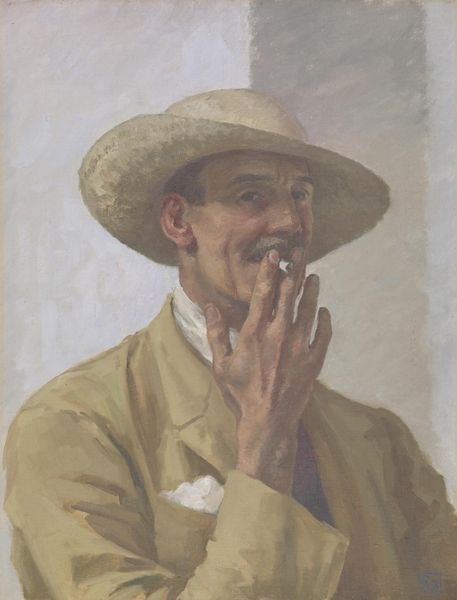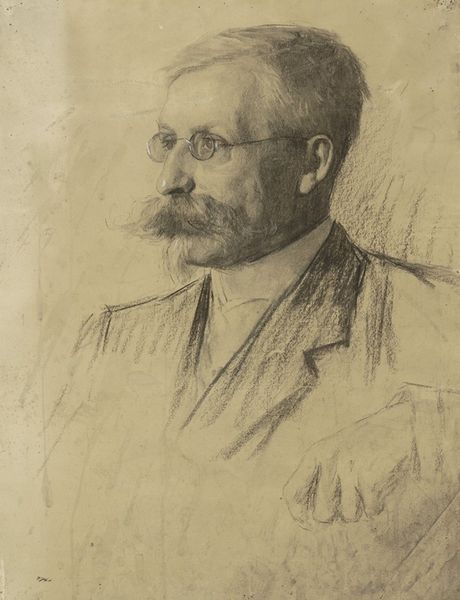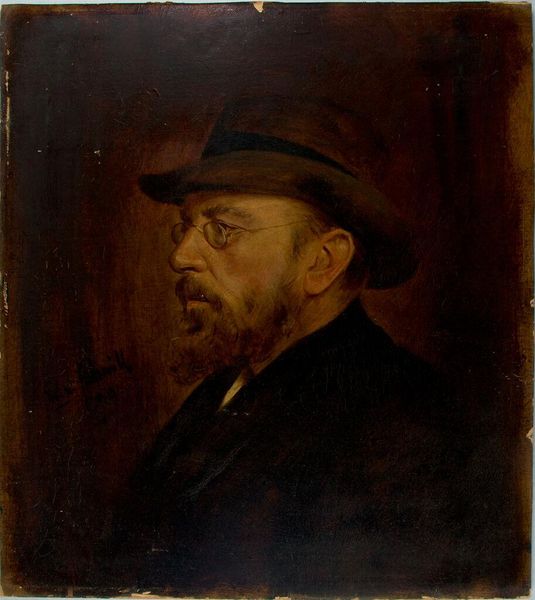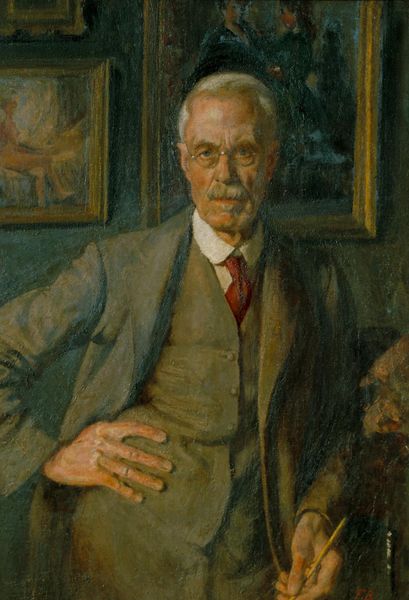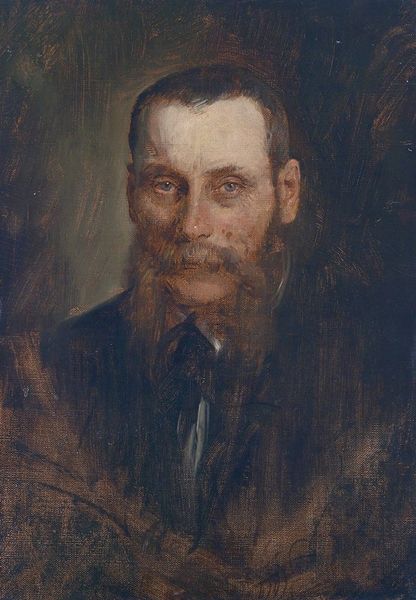
painting, oil-paint
#
portrait
#
self-portrait
#
portrait
#
painting
#
oil-paint
#
modernism
#
realism
Dimensions: 27 x 35 cm
Copyright: Public domain
Curator: Looking at this painting, I'm struck by how intimate it feels, despite the formal presentation. The heavy impasto gives it a certain rawness, a directness that transcends its realism. Editor: Agreed. Before us we have Alfredo Andersen's "Self-portrait," painted in 1926. It's an oil painting, showcasing Andersen himself in what appears to be a moment of quiet contemplation. Let's consider the societal pressures faced by artists navigating modernism. This isn’t just a likeness; it's a statement about identity, perhaps resilience against shifting cultural landscapes. Curator: Precisely. Note the averted gaze, almost as if he is shielding his soul from scrutiny. The cigar adds a layer of complexity too, projecting masculinity but also perhaps vulnerability. How does this blend of self-representation interact with our own readings of maleness? Editor: Interesting point. Contextually, Andersen was instrumental in establishing art education in Paraná, Brazil. Understanding his pedagogical role re-frames this painting: Is it also an exploration of artistic authority? How did institutions validate or challenge these claims in that period? Curator: Indeed. And beyond institutions, consider how gender intersects. Was there an expected masculinity or patriarchy to live up to at that time in Brazil? He presents himself as the confident artist but, reading into it today, might also echo broader cultural anxieties tied into social norms. Editor: The public display of the art is also fascinating. Andersen had his works displayed in numerous salons and public exhibitions. It seems his intention was always for engagement. This self-portrait plays within, but also tests conventions of social portraiture – pushing at expectations of art’s function. Curator: It speaks volumes that he painted this specific moment. Does it reflect Andersen trying to claim, reclaim, or maybe defy, the artistic narrative associated to portraiture within the socio-cultural context where gender and status was perceived. Editor: It definitely provokes more questions than answers! Considering the history, the modernist art landscape, the gender discourses that intertwine within "Self-portrait," Andersen’s legacy becomes much richer. Curator: Absolutely. Art’s inherent value lies in opening discussions around complex societal facets—it allows us deeper perception on how art pieces tie in together across intersecting subject matters.
Comments
No comments
Be the first to comment and join the conversation on the ultimate creative platform.
